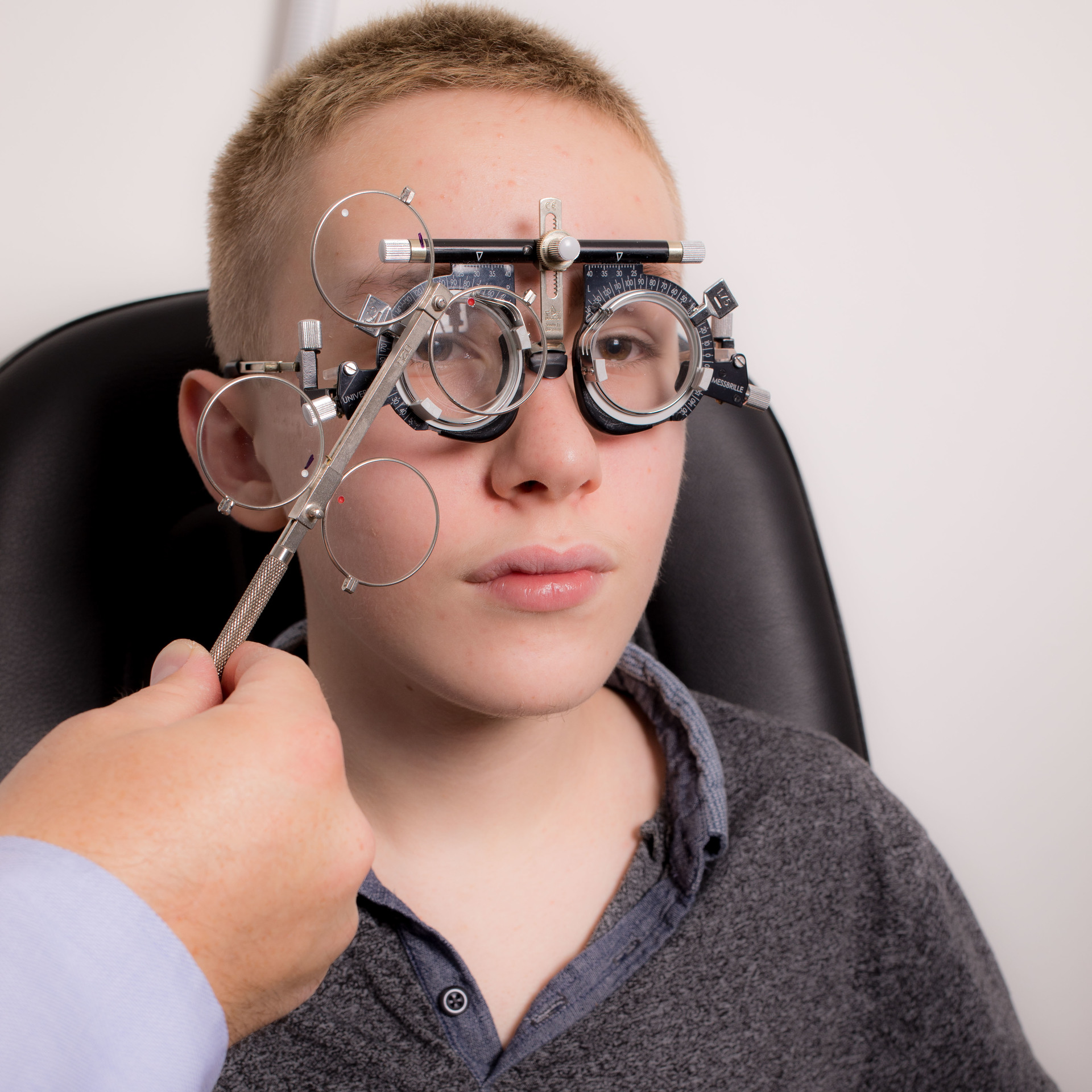
Myopia (short-sightedness) occurs when the eye is physically too long, meaning light entering the eye doesn’t reach the light-sensitive cells (retina) as intended, leaving vision blurred. This is corrected with glasses or contact lenses.
As well as requiring glasses/lenses to correct, myopia, in particular high levels of myopia, can lead to an increased risk of eye problems such as myopic maculopathy, retinal detachment and glaucoma
Myopic maculopathy. This type of macula degeneration occurs in patients who are short-sighted.
Damage to the central retina causes a reduction in clarity of the central vision, which for some can lead to their
becoming partially sighted or registered blind. If someone has a large degree of myopia they are at a greater risk of developing sight-threatening myopic maculopathy.
Retinal detachment: This is where the retina pulls away from the other layers of the eye. It can lead to
permanent sight loss if it is not treated quickly. Higher levels of myopia increase the risk of this happening.
Glaucoma: Glaucoma is a group of eye diseases in which the optic nerve, which connects the eye to the brain, is damaged, normally by increased pressure in the eye. Myopia has been shown to be a risk factor for the most common type of glaucoma, primary open-angle glaucoma (POAG).
Myopia usually starts in late childhood/early teens and stabilises in early adulthood. What we have found over
recent years is that children are becoming more myopic at an earlier age. The nature of myopia with it being caused by increasing eye growth tends to get worse with time.
Myopia has a genetic link, children with two myopic parents have a 1 in 2 chance of becoming myopic and children with one myopic parent have a 1 in 3 chance. As well as genetic factors, lifestyle changes have caused an increase in the prevalence of myopia in children. Research shows that increased time spent indoors and doing near tasks has an effect on myopia progression. Studies have shown that one in five teenagers in the UK are now myopic and that myopia is twice as prevalent as it was in the 1960s (16.4% compared with 7.2%).
There have been extensive studies and trials into managing myopia progression, the results of which we will cover next time.




